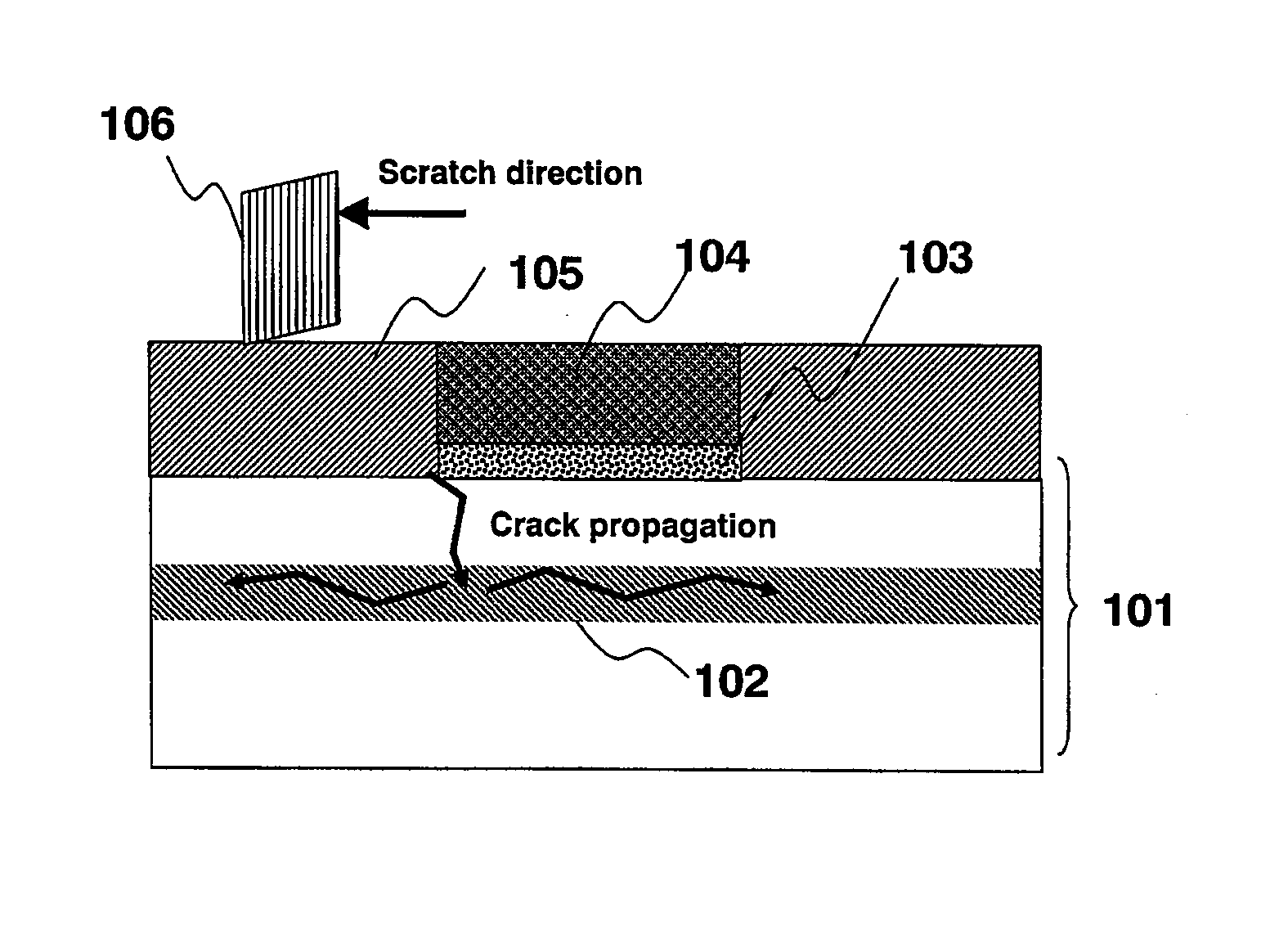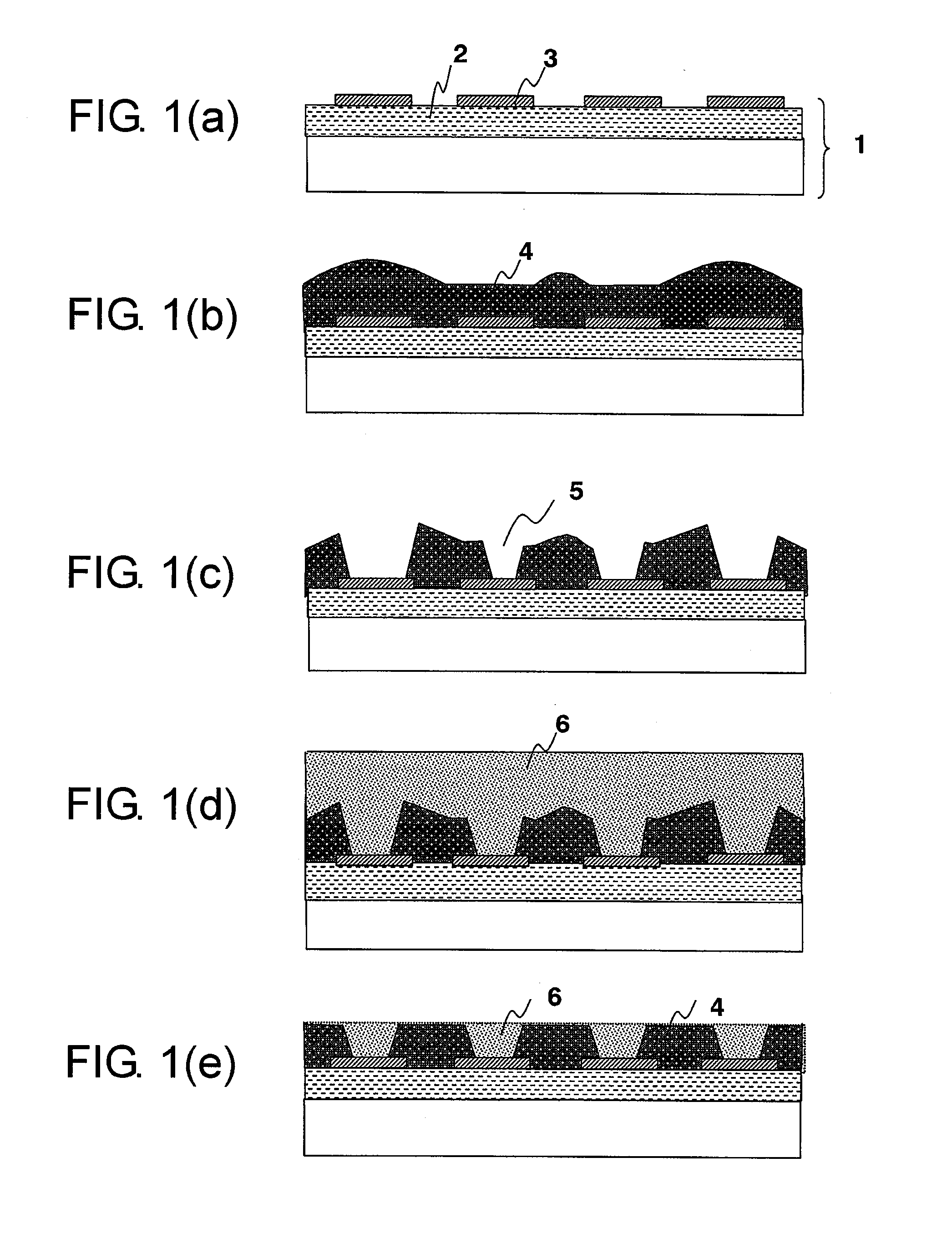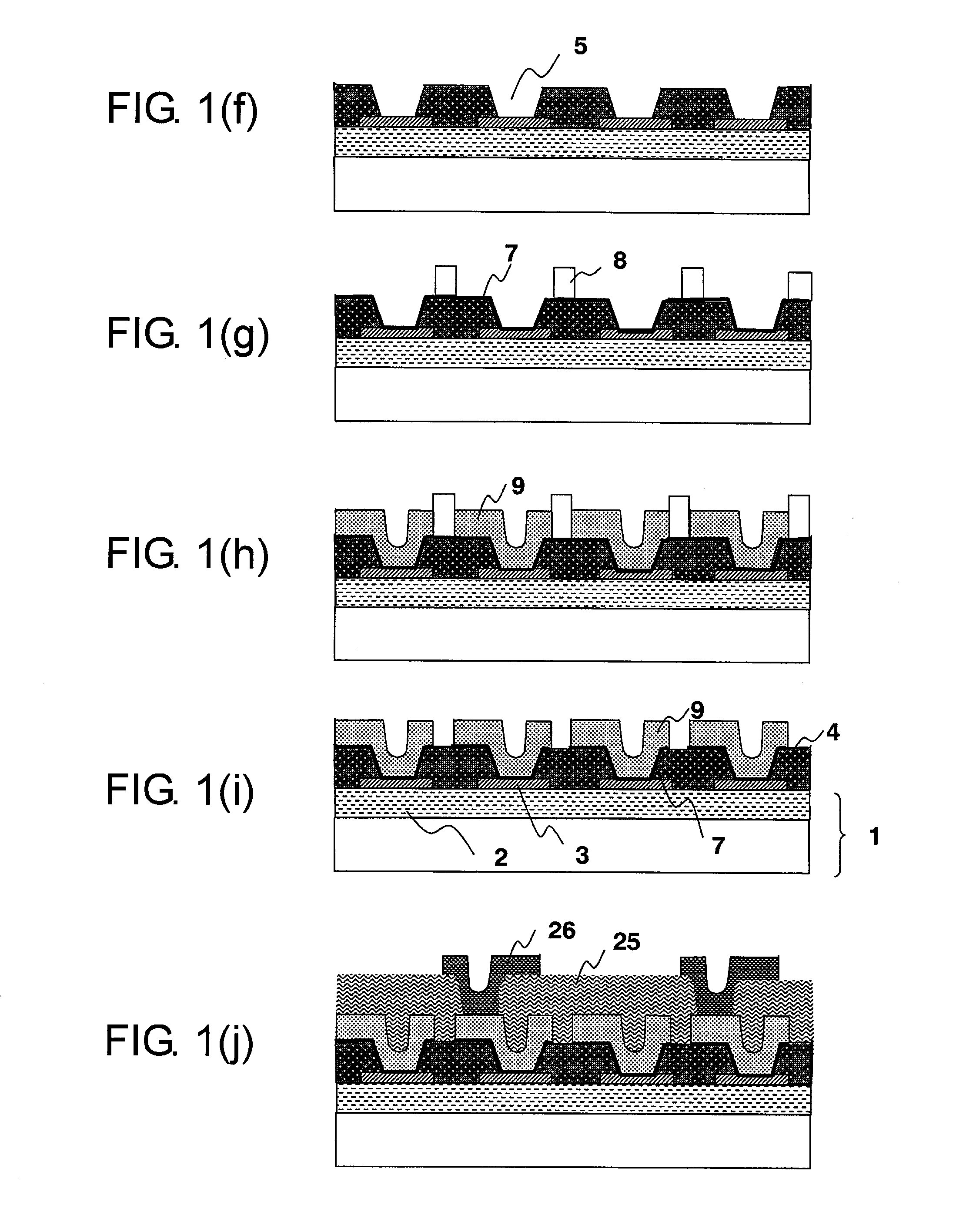Method of redistributing functional element
- Summary
- Abstract
- Description
- Claims
- Application Information
AI Technical Summary
Benefits of technology
Problems solved by technology
Method used
Image
Examples
first embodiment
[0051]Embodiments of the present invention will be described in detail with reference to the drawings. FIGS. 1(a) to 1(e) and 1(f) to 1(j) are schematic cross-sectional views showing processes of a manufacturing method according to a first embodiment of the present invention.
[0052]FIG. 1(a) shows a structure of a functional element 1, an internal interconnection layer 2 of the functional element, and electrode pads 3 provided on the uppermost portion of the internal interconnection layer 2. In FIG. 1(b), an insulating layer 4 is formed. A spin coating method, a curtain coating method, a printing method, a laminating method, and the like are suitably used to supply the insulating layer 4. However, the method of supplying the insulating layer 4 is not limited to those specific examples. Then, for example, in a case where the insulating layer 4 is formed of an insulating resin layer, resin may be cured as needed with an oven, a hot plate, or the like. Inorganic substance can be used fo...
second embodiment
[0061]FIGS. 2(a) to 2(e) and 2(f) to 2(j) are schematic cross-sectional views showing processes of a manufacturing method according to a second embodiment of the present invention.
[0062]FIG. 2(a) shows a structure in which, after an interconnection layer 12 is formed on a base substrate 11, metal pillars 13 are formed on the interconnection layer 12. Metals such as Cu and stainless, glass substrates, alumina substrates, Si, and the like are suitably used for the base substrate according to the present invention. However, the material of the base substrate is not limited to those specific examples. Furthermore, from the viewpoint of electric characteristics, it is preferable to provide an insulating layer between the base substrate 11 and the interconnection layer 12 in a case where the base substrate 11 is a conductor or a semiconductor. In a case where the base substrate 11 is a functional element, the metal pillars 13 provided right above electrode pads via the interconnection lay...
third embodiment
[0074]FIGS. 3(a) to 3(d) and 3(e) to 3(h) are schematic cross-sectional views showing processes of a manufacturing method according to a third embodiment of the present invention.
[0075]FIG. 3(a) shows a structure which includes a functional element 31, an internal interconnection layer 32 of the functional element, and electrode pads 33 provided on the uppermost layer of the internal interconnection layer 32. In FIG. 3(b), sacrificial layers pillars 34 are made of organic resin. The sacrificial layer pillars are formed on the electrode pads 33. In a case where the sacrificial layer pillars 34 are made of a photosensitive material, the sacrificial layer pillars 34 can be formed by exposure and development. In a case where the sacrificial layer pillars 34 are made of a non-photosensitive material, the sacrificial layer pillars 34 can be formed by a printing method. However, the method of forming the sacrificial layer pillars 34 is not limited to those specific examples. In a case wher...
PUM
 Login to View More
Login to View More Abstract
Description
Claims
Application Information
 Login to View More
Login to View More - Generate Ideas
- Intellectual Property
- Life Sciences
- Materials
- Tech Scout
- Unparalleled Data Quality
- Higher Quality Content
- 60% Fewer Hallucinations
Browse by: Latest US Patents, China's latest patents, Technical Efficacy Thesaurus, Application Domain, Technology Topic, Popular Technical Reports.
© 2025 PatSnap. All rights reserved.Legal|Privacy policy|Modern Slavery Act Transparency Statement|Sitemap|About US| Contact US: help@patsnap.com



